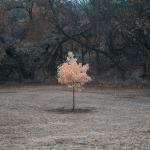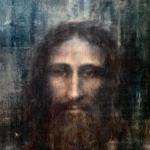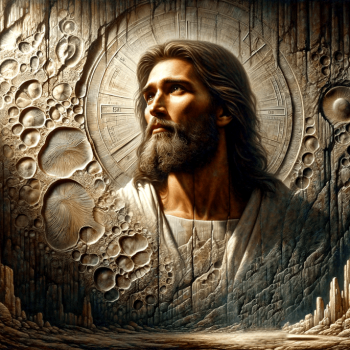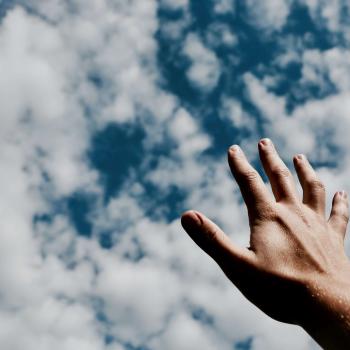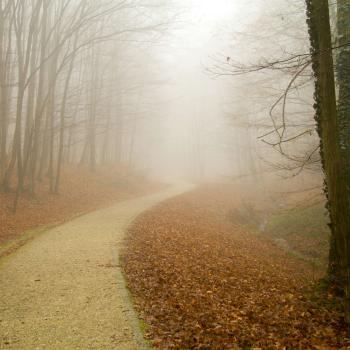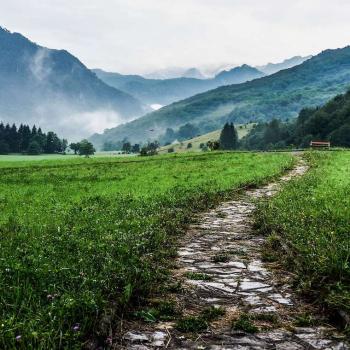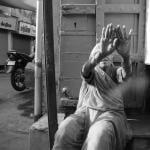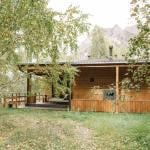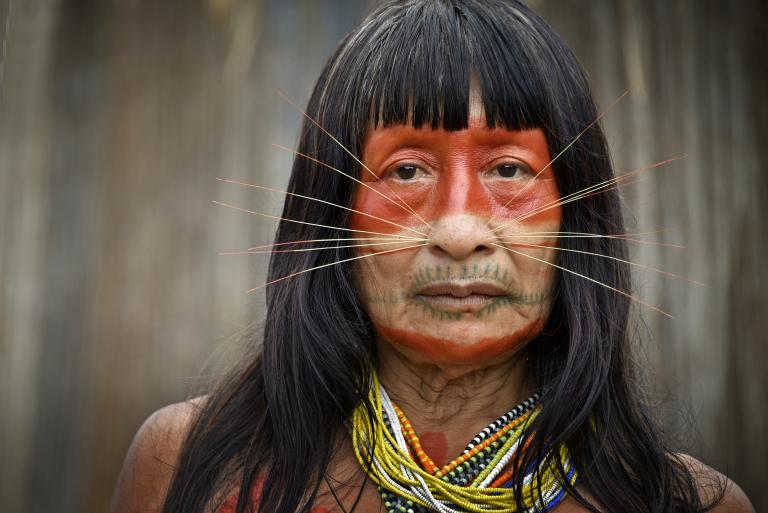
Have you ever heard of a book titled The Encounter, Amazon Beaming? It tells the story of National Geographic photographer Loren McIntyre, and how he made contact with the elusive Mayoruna (also known as Matsés) tribe in the deepest jungles of Brazil in 1969. It made McIntyre one of the first “outsiders” to ever have contact with the tribe.
For the past several years, Simon McBurney has brought The Encounter story to the stage as a one-man show, including a run on Broadway. Before doing so, McBurney retraced the steps of McIntyre’s journey and visited the indigenous tribespeople who to this day have little contact with the outside world. McBurney has a special interest in “consciousness” and how people think. So he asks some of the tribespeople:
“Where is your consciousness located?”
Now if you ask most people, they will tell you that consciousness is located somewhere behind the eyes in the area of the brain. But when McBurney asked the question of the Mayoruna, they pointed to the forest. He thought they didn’t understand the question, so he asked them again. They pointed to the forest again. He then deduced that for the tribespeople, the inner world is not separate from the outer world around them. The forest and inner self are one.
This story may help explain how the photographer Loren McIntyre communicated with the tribespeople, not with words, but through his consciousness. McIntyre spent several weeks with the Mayoruna living as a de facto member of the tribe. He did not speak their language and came to realize he could hear what the tribespeople were telling him without the need to speak. They primarily communicated through thought. He, too, soon became an expert in telepathy.
But telepathy is just one attribute that makes the tribe interesting. Known as the “cat people,” the Mayoruna believe they’re descended from jaguars—and pierce their faces with thin wooden spikes that mimic whiskers. The tribesmen find McIntyre fascinating, this light-skinned man wearing clothing. They wear none. But rather than ask him his name or where he came from, they specifically want to know one thing about him:
“What is your ca’ah?”
McIntyre does not know what the term “ca’ah” means so eventually asks an interpreter for an explanation. He is told that a person’s ca’ah is your “direction in life.” It is “contained in your spirit” and is “controlled by your conscious decisions.” Each of the tribespeople has their own specific ca’ah, or role within their tribe, and they want to know what his role is in his tribe. He explains that his ca’ah is “to find things and photograph them” which the tribe finds a satisfying answer.
How would you answer the question “what is your ca’ah?”
If you’re unsure how to answer, the key may be to look at your own “tribe.” See where you fit in and what you offer now. What do you provide of value? How can you be of greater value? You may find that you’re already offering a service or activity of importance (it could be something as simple as being a great listener), but that you can expand on and become even better at it. To this end, the Beat-era poet Gary Snyder (who is still kicking at 91) advises us to:
Find your place on the planet, dig in, and take responsibility from there.
Finding your own “place on the planet” means setting down roots and giving to the people and community around you—in whatever way you can and with as much devotion and love as you can. Wondering how much can you give? Snyder tells us that within your own tribe:
The size of the place that one becomes a member of (the tribe) is limited only by the size of one’s heart.
I’ve recently been thinking about a person with a big and giving heart. He was a good friend of mine, Terry Tomalin, and it is now 5 years since he passed away. He lived the fullest life possible, one that was abruptly cut short by a sudden and unexpected heart attack at the age of 55. (A reminder that we are all on this earth for a limited amount of time.)
Terry’s passion was the outdoors, specifically in his adopted home state of Florida, but he did more than fish and dive, paddle and hike. As the long-time Outdoors Editor for the St. Petersburg Times, he shared his adventures, using his column as opportunities to teach, as well as tell. He was a strong advocate for the environment and educated his readers on how they could prepare for virtually any out in-the-wild situation. (His life was recently commemorated.)
Yet, to peg Terry as purely an outdoorsman is to only tell part of his story. He married the love of his life, Kanika, and was a devoted and caring husband and father, which he understood was his most important role in life. He committed himself to causes and organizations that bettered his community. And he motivated those around him to become better people. (In my late-20s, I was living a sedentary life when he cajoled me into running. Three decades later, I still run 4-5 days a week.)
Terry gave his ALL to those around him, so to say Terry’s ca’ah was to teach us to love and respect the outdoors only covers one facet of his life–just as our own vocation is just one slice of our own lives. I believe Terry’s calling was a bit broader: to give 100% of himself—to his family, his friends and his community. That was is “ca’ah” and a goal he accomplished.
Have you identified your ca’ah? If not, what might it be? If yes, how can you nourish it and make it a more integral part of your life and reason for being?


